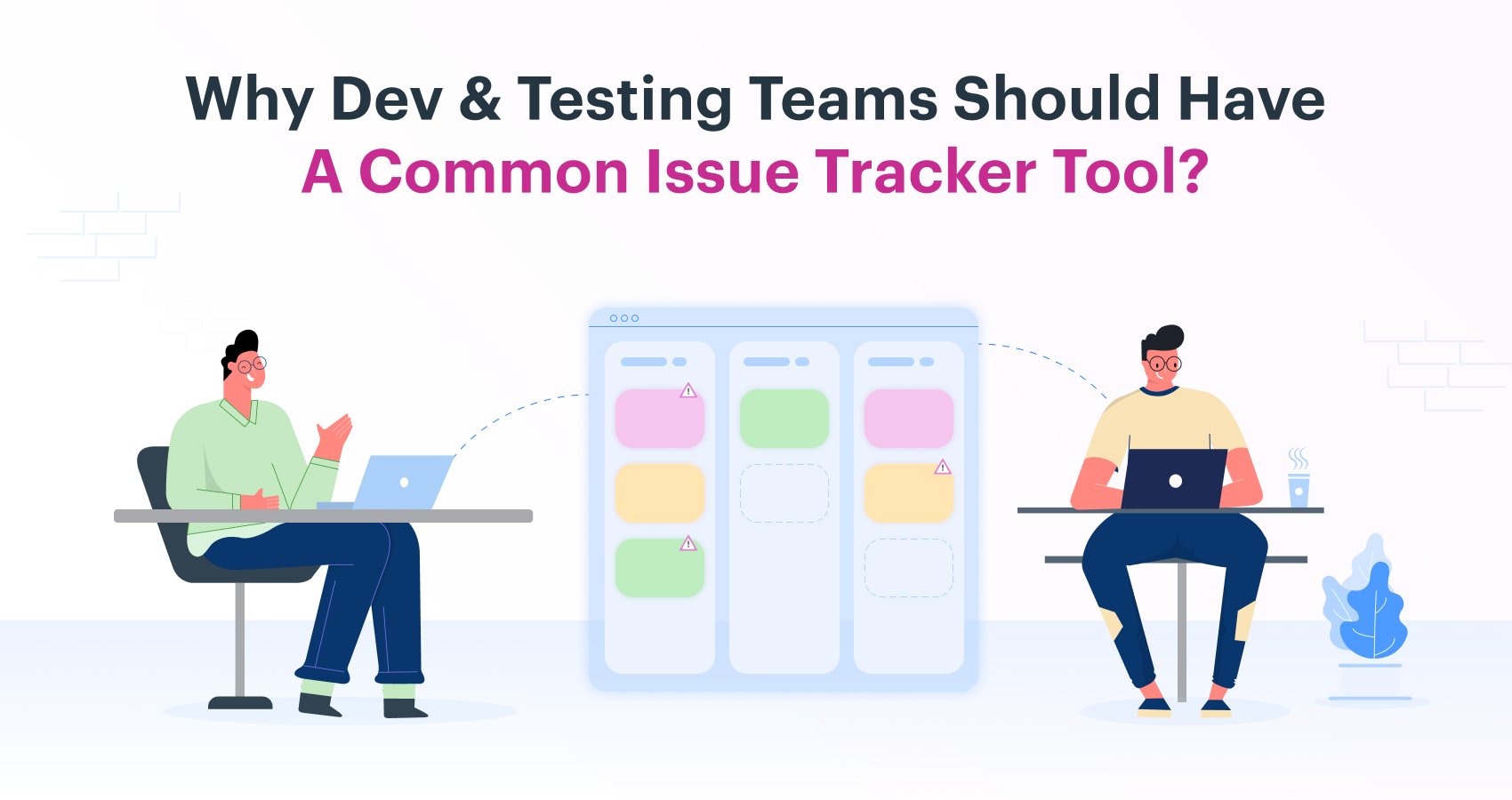Effective communication and collaboration are among the most essential requirements for overall success in any industry, software included. To enhance the collaboration within teams, many organizations allow members to choose their own preferred set of tools and systems. This sounds great on paper as it allows everyone to operate cohesively and get their work done.
There is, however, a dark side to this as well. Different teams working on separate bug tracking tools have the potential to create conflict within the organization and negatively impact interdepartmental collaboration. Segmented systems create virtual walls and information silos which can cause your productivity to plummet and leave a lot of unresolved issues.
In any software development project, effective collaboration between the development and testing teams is a must. That’s why it’s always recommended to use a common issue tracker tool to keep everything under one roof.
How Development and Testing Teams Use an Issue Tracker Tool
Before discussing how a common bug tracking tool can help both development and testing teams collaborate effectively, take a look at how these teams rely on an issue tracker tool.
Development teams generally rely on issue tracking apps to centralize their database and prioritize fixes according to the severity of the issue. These tools also allow developers to collect information regarding performance, address tickets from customers, validate their fixes, and maintain a history of issues to recognize repetitive issue patterns.
Testing teams use issue tracker tools a little differently. They use them to raise issues they find, communicate information about a bug, track progress on the solution, ensure that the new fix actually solves the issue, and coordinate with the team responsible for the release.
Why Should Development & Testing Team use a Common Issue Tracker?
Both the jobs are interlinked. The testing team raises the issue for the developers, who fix it and relay it back. The product goes through the test once again to ensure that the fix actually works and the new version gets processed for release. Connecting both teams with a common tool can work wonders. The entire process can work like a well-oiled machine and enhance overall productivity.

Here are the top 5 reasons to have a common issue tracker tool between teams:
Better Bug Identification
No matter how talented a development team is, bugs are inevitable. Having a single tool would make it easier for both the development and testing teams to identify and prioritize solutions. Some issues can be left alone as they are not critical, while some issues directly affect the functionality of your product. A centralized database for the testing and development team would make it easier to identify those issues and ensure smoother processes for the end-user.
Accurate Validation
Development and testing teams share the responsibility of ensuring that the product is a good fit for the system environment of users. The validation process is carried out by the development team but requires a lot of back and forth between developers and testers. Consolidating that within the same structure would make the process more seamless and allow both teams to remain on top of things.
Unified Workflows
When it comes to bugs and issues, the jobs of development and testing teams are so interlinked that there is no need for a separate workflow. With the same issue tracker tool, both teams can handle everything together from the beginning to the end in a single workflow. This would result in increased accountability, better risk management, and enhanced performance.
Reduced Internal Friction
One of the biggest problems with information silos is the internal conflict it brings to the table. Each team has its set of priorities and expectations which are hard to meet without proper understanding.
For instance, the development team might already be dealing with some high-priority items when they get a specific urgent request from testers. Since the testing team is not aware of what’s happening at the developer’s end, they’ll expect the same kind of urgency from them, and not doing that will cause conflicts down the line.
A single-issue tracker tool can minimize the chances of this. The testing team can know the current priorities of the development team and manage their requests accordingly. Similarly, the development team will also be in a better position to understand the requests from the other department and change priorities when required.
Optimization of the Entire Process
Finally, it’s important to ensure that you are not only responding to issues and changing things when they are wrong. The best software teams try to optimize the entire issue tracking process iteratively and consistently work on making it effective.
A single-issue tracker tool can help this process by making everyone aware of the other team’s issues and their overall impact. A better understanding of the product outcomes and the role of all teams can go a long way towards making the entire review process more efficient.
Manage Everything Better with Kissflow
Moving your testing and development teams to a common issue tracker tool is easier said than done. There are multiple considerations.
Apart from the technical capabilities you expect from an issue tracker, the tool must cater to the requirements of both the developers and testers. It needs to be adaptable, flexible, and powerful at the same time. The workflows should be customizable, so your developers and testers can work within the same process.
Kissflow Workflow is a customizable issue tracking solution that comes with everything your development and testing teams need, minus the complexity. The platform is easy to customize and is perfect for businesses looking for a feature-rich solution that requires no coding experience or external expertise to set up and operate.
So, what are you waiting for? Try Kissflow Workflow for free.